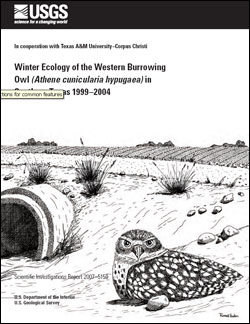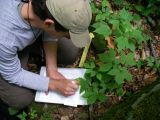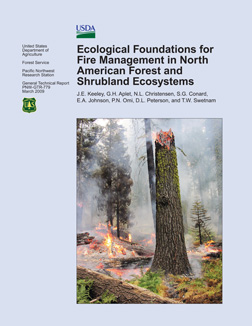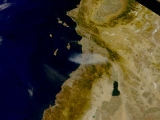- Home
- About S&T
- Taxa/Organisms
- Ecosystems
- Issues
- Methods & Tools
- Reports & Publications
- Location
- Search
Publisher: USGS | Science Center: Forest and Rangeland Ecosystem Science Center (FRESC, Corvallis) | Format: URL
sagemap.wr.usgs.gov — SAGEMAP - Spatial Data for Sage Grouse and Shrubsteppe Systems is needed for research and management of sage grouse and sagebrush steppe habitats in the western United States. This website is a product of the NBII Great Basin Information Project. Find out more from this resource on sage grouse as endangered species, habitat information, More...

November 2007 | Publisher: Academic Institution (Sage-grouse Restoration Project (SGRP), Utah State University) | Format: .PDF
sgrp.usu.edu — The greater sage-grouse (Centrocercus urophasianus) and the Gunnison sage-grouse (C. minimus) are species of concern because of their population declines and shrinking geographic distributions. Of continuing interest is the question of population abundance and trends. This publication answers the questions that deal with sage-grouse population, More...

2006 | Publisher: USGS | Science Center: Fort Collins Science Center (FORT, Ft. Collins) | Format: URL
www.fort.usgs.gov — Although the monitoring of black-footed ferret (Mustela nigripes) populations following reintroductions has not been haphazard, several ferret recovery groups since 1994 have recommended development of uniform standards prescribing minimum methods, intensities, and frequencies of monitoring that would provide data on population size, mortality More...

1999 | Publisher: USGS | Science Center: Fort Collins Science Center (FORT, Ft. Collins) | Format: URL
www.fort.usgs.gov — A quasi-experimental situation exists in Rocky Mountain National Park, where elk (Cervus elaphus) populations have increased 3-fold since 1968 following their release from artificial controls within the park. Increases in elk habitat use and decreases in deer habitat use were observed. Significant increases in cover of mosses and lichens occurred More...

Publisher: USGS | Format: URL
pubs.usgs.gov — This study examines the winter ecology of the western burrowing owl (Athene cunicularia hypugaea) in five Texas counties surrounding Corpus Christi, in southern Texas. There is a substantial gap in information on the owl's life cycle during migration and non-breeding winter months; almost all previous research on western burrowing owls has been More...

Publisher: USGS | Science Center: Biological Informatics | Format: URL
biology.usgs.gov — This web page presents samples of genetics and genomics research from the USGS Biological Resources Discipline about the conservation genetics of plants.

Publisher: Other Federal Agency (United States Forest Service (USFS)) | Format: .PDF
www.fs.fed.us — USGS scientist Jon Keeley led a team of scientists from various agencies and academic institutions in developing a framework that will inform fire management of ecosystems. This review uses a scientific synthesis to provide an ecological foundation for management of diverse ecosystems. Ecosystem-based management requires different strategies on More...

Publisher: USGS | Format: URL
pubs.usgs.gov — The U.S. Geological Survey (USGS), in collaboration with the USDA Farm Service Agency and Natural Resources Conservation Service, initiated a study to develop and apply approaches to quantify changes in ecosystem services resulting from wetland restoration activities funded by the USDA. Surveys from this study included catchments with seasonal and More...

Publisher: USGS | Science Center: Biological Informatics | Format: URL
biology.usgs.gov — This web page presents samples of genetics and genomics research from the USGS Biological Resources Discipline about the conservation genetics of landscapes.

Publisher: USGS | Science Center: Western Ecological Research Center (WERC, Sacramento) | Format: URL
www.werc.usgs.gov — Where nonnative plant species have invaded wildlands or have potential to invade, fire may influence their abundance and the effects of the nonnative species on native plant communities. USGS scientists and colleagues have contributed chapters to a volume that synthesizes scientific information regarding wildland fire and nonnative invasive plant More...

Publisher: USGS | Science Center: Western Ecological Research Center (WERC, Sacramento) | Format: URL
www.werc.usgs.gov — This web resource addresses the positive relationship between cheatgrass (Bromus tectorum) and fire frequency as a major concern for land managers in semi-arid shrublands throughout western North America, particularly in Great Basin sagebrush steppe. Management tools are needed to break this cycle, and in this project we will evaluate the use of More...

Publisher: NBII | Format: URL
www.nbii.gov — The NBII Amphibians Web site serves as a resource for individuals to learn about amphibians and factors affecting global amphibian populations. This site allows citizen scientists to contribute informative reports regarding local amphibian populations, thereby assisting the greater scientific community's efforts to better understand amphibian More...
